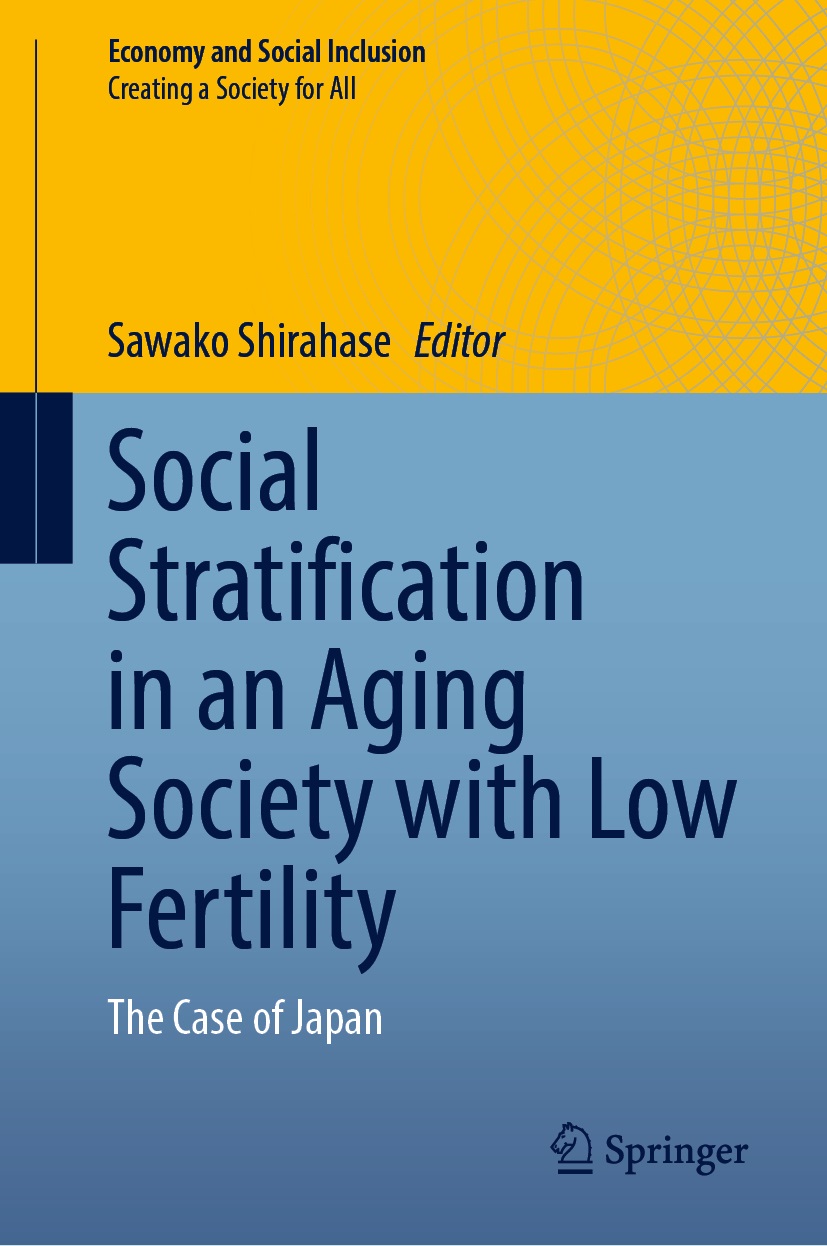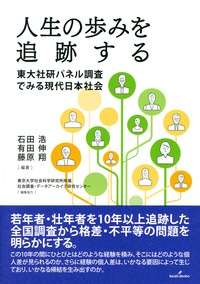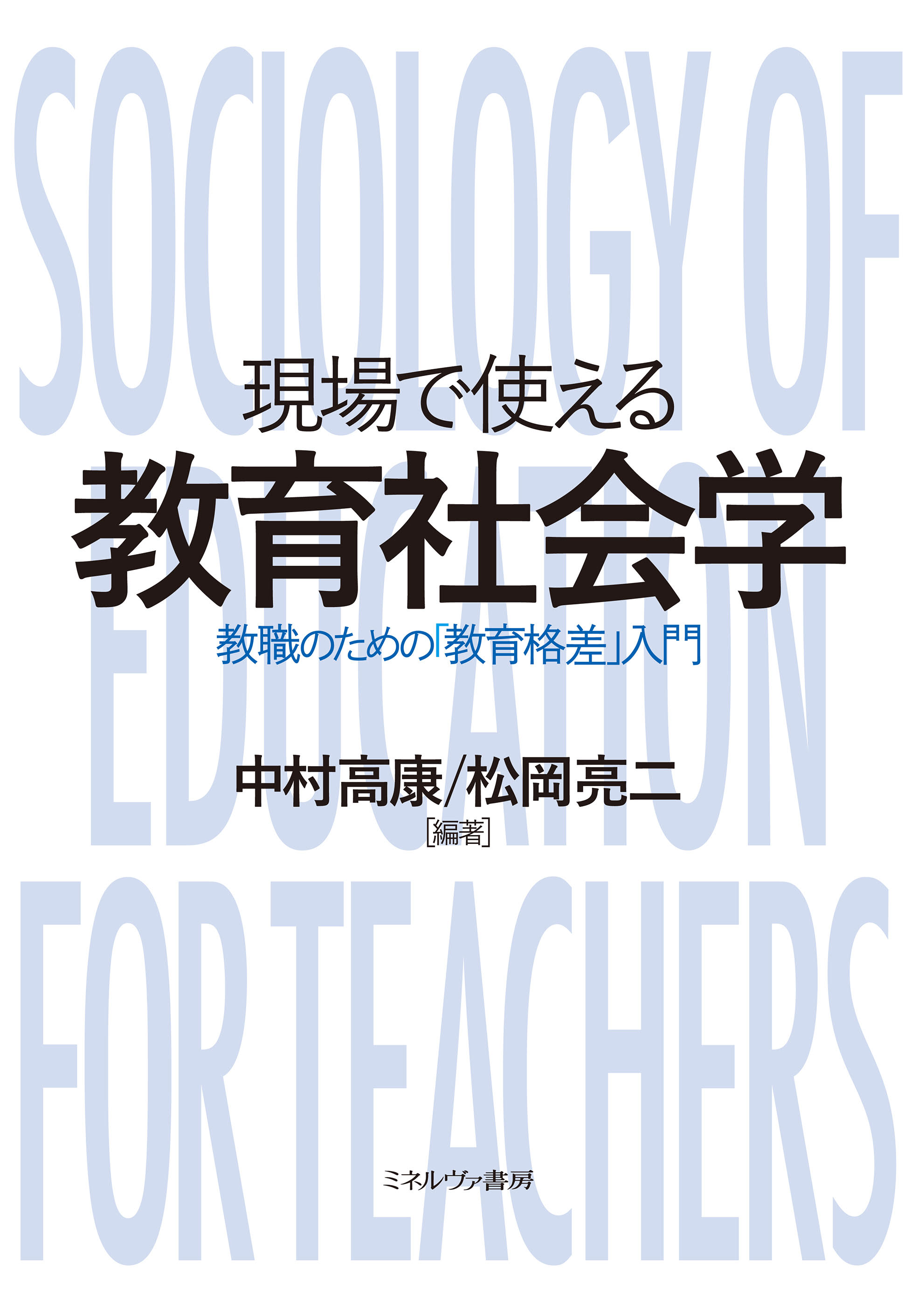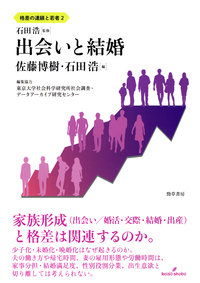
Title
The Structure of Social Stratification in the Aged Society with Low Fertility Series Shoshi Korei Shakai no Kaiso Kozo [3 volumes] (Vol.1 The Structure of Social Stratification in the Early-stage of Life / Vol.2 The Structure of Social Stratification in the Middle-stage of Life / Vol.3 The Structure of Social Stratification in the Late Stage of Life)
Size
A5 format
Language
Japanese
Released
July 13, 2021
ISBN
vol.1 978-4-13-055141-0
vol.2 978-4-13-055142-7
vol.3 978-4-13-055143-4
Published by
University of Tokyo Press
Book Info
Japanese Page
Series 1–3: The Structure of Social Stratification in an Aged Society with Low Fertility consists of empirical research on various aspects of social inequalities in three different stages of life in Japan: Vol. 1, The Structure of Social Stratification in the Early Stages of Life; Vol. 2, The Structure of Social Stratification in the Middle Stages of Life; and Vol. 3, The Structure of Social Stratification in the Late Stages of Life. Social stratification theory has been developed and initiated largely by sociologists in Europe and the United States, and Japanese scholars have benefited from and learned considerably from their work. The National Survey of Social Stratification and Social Mobility (SSM Survey), which has been conducted every 10 years since 1955, plays a critical role in promoting empirical research in Japan. This series focused on the fact that Japan is the most aged country in the world, and examines the pattern and degree of social inequality by taking into account demographic transformations such as declining fertility rates and aging populations. Discussions are provided on the characteristic structures of social stratification in each period of life, such as the period up to shortly after completing the final education and entering the labor market (the early stages of life); the period focused on those who are at the working age (the middle stages of life); and the period around retirement and later stages of the life course (late stages of life).
The first volume, The Structure of Social Stratification in the Early Stages of Life, discusses stratification research related to educational attainment, transfer from education to the labor market, early career trajectories, timing of leaving the family home, and family formation. The phenomenon of low fertility is closely associated with both the increase of young people who delay marriage or are hesitant about it, and the relationship between educational attainment and workforce labor among married couples. Even then, strong gender disparities persist across the life course, beyond education, work experience, and family relationships.
The second volume, The Structure of Social Stratification in the Middle Stages of Life, studies the active working period, which has traditionally been a main theme in stratification research, and consists of two main aspects: the labor market structure—such as occupation and career—and social attitudes. The volume enquires, for example, if there are any unique situations in the degrees and patterns of stratification compared with those at the early stages. The main findings are as follows: the barriers to mobility between regular and non-regular work have persisted and increased, and the diversity in women’s careers has led to expanding disparities between men and women. These results suggest a division of society in terms of social consciousness, and reveal the contents of a complex structure that are difficult to see in terms of a clear change.
The third volume, The Structure of Social Stratification in the Late Stages of Life, includes studies focusing on older people which reflect the fact that conventional studies of social stratification have paid attention only to working-age people, not to those in the later stages of life. This volume deals with the question, for example, of the possible application of the structure of social stratification based on working-age respondents to those in the post-retirement age. Themes in this volume include: economic inequality, by taking their middle-age working history into full consideration; the duration of the impact of class origin on their lives at the time of survey; regular and non-regular worker disparities; and the impact of regional differences on the attitudes of older people. In determining the comprehensive economic status of all people at the time of the survey, old age and social background—as represented by the father’s occupation when the respondent was 15 years old—remained significant and had a direct effect. Further, this direct effect and the effect of employment status at the age of 50 did not disappear in the late stages. Even though more people had weakened or absent relationships with the labor market, the impact of family background and working profile on their working age did not disappear. The aging of the population does not necessarily bring a new structure of social inequality; rather, it appears that the social status at the stratification for older people is not determined independently of their lives during which they worked, earned, spent time, and formed their family. People grow older, keeping their opportunities and choices of the past, with inequalities that persist and have accumulated throughout the life course. Therefore, this third volume, in particular, claims that we need the dynamic new development of stratification research that aggressively considers not only a long-term time axis from the past but also a transitional risk for the future.
It is our hope that this series will provide readers with insight into the current state of stratification research in sociology that considers an aged society with low fertility.
(Written by SHIRAHASE Sawako, Professor, Graduate School of Humanities and Sociology / 2022)
Related Info
https://www.utp.or.jp/book/b601054.html
Vol. 1 Jinsei Shoki no kaiso Kozo (The Structure of Social Stratification in the Early-stage of Life) by NAKAMURA Takayasu, MIWA Satoshi, and ISHIDA Hiroshi
https://www.utp.or.jp/book/b570352.html
Vol. 2 Jinsei Chuki no Kaiso Kozo (The Structure of Social Stratification in the Middle-stage of Life) by WATANABE Tsutomu, KIKKAWA Toru, and SATO Yoshimichi
https://www.utp.or.jp/book/b582895.html
Vol. 3 Jinsei Koki no Kaiko Kozo (The Structure of Social Stratification in the Late Stage of Life) by ARITA Shin, SUDO Naoki, SHIRAHASE Sawako
https://www.utp.or.jp/book/b582895.html
The National Survey of Social Stratification and Social Mobility (SSM Survey)
https://www.l.u-tokyo.ac.jp/2015SSM-PJ/



 Find a book
Find a book


 eBook
eBook









